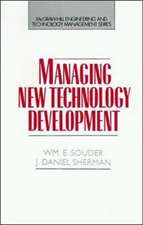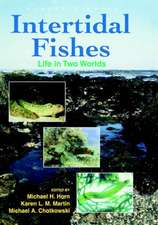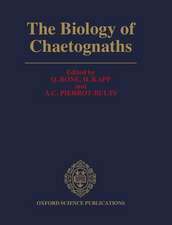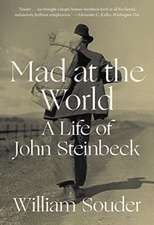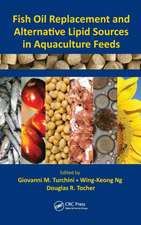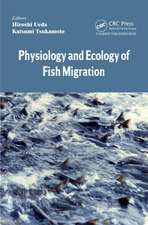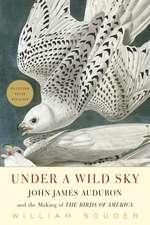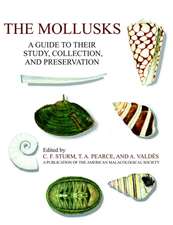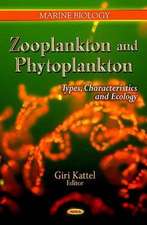On a Farther Shore
Autor William Souderen Limba Engleză Paperback – 15 sep 2013
Rachel Carson loved the ocean and wrote three books about its mysteries. But it was with her fourth book, Silent Spring, that this unassuming biologist transformed our relationship with the natural world. Silent Spring was a chilling indictment of DDT and other pesticides that until then had been hailed as safe and wondrously effective. It was Carson who sifted through all the evidence, documenting with alarming clarity the collateral damage to fish, birds, and other wildlife; revealing the effects of these new chemicals to be lasting, widespread, and lethal. Silent Spring shocked the public and forced the government to take action, despite a withering attack on Carson from the chemicals industry. It awakened the world to the heedless contamination of the environment and eventually led to the establishment of the EPA and to the banning of DDT. By drawing frightening parallels between dangerous chemicals and the then-pervasive fallout from nuclear testing, Carson opened a fault line between the gentle ideal of conservation and the more urgent new concept of environmentalism.
Elegantly written and meticulously researched, On a Farther Shore reveals a shy yet passionate woman more at home in the natural world than in the literary one that embraced her. William Souder also writes sensitively of Carson's romantic friendship with Dorothy Freeman, and of Carson's death from cancer in 1964. This extraordinary new biography captures the essence of one of the great reformers of the twentieth century.
Preț: 102.27 lei
Nou
Puncte Express: 153
Preț estimativ în valută:
19.58€ • 21.27$ • 16.45£
19.58€ • 21.27$ • 16.45£
Carte disponibilă
Livrare economică 31 martie-14 aprilie
Livrare express 15-21 martie pentru 26.79 lei
Preluare comenzi: 021 569.72.76
Specificații
ISBN-13: 9780307462213
ISBN-10: 0307462218
Pagini: 496
Ilustrații: 8 Page Black and White Insert
Dimensiuni: 130 x 201 x 30 mm
Greutate: 0.41 kg
Editura: BROADWAY BOOKS
ISBN-10: 0307462218
Pagini: 496
Ilustrații: 8 Page Black and White Insert
Dimensiuni: 130 x 201 x 30 mm
Greutate: 0.41 kg
Editura: BROADWAY BOOKS
Extras
One
Miss Carson's Book
Late in the summer of 1962, extreme weather visited both ends of the United States. In the West it was so hot that women wore swimsuits on the streets of San Francisco, and the smog levels in that city were the highest ever recorded. On the East Coast, Hurricane Alma churned northward, interrupting a pleasant spell as it neared the tip of Long Island. On August 28 the edge of the storm ended play at Yankee Stadium one inning after Mickey Mantle blasted what proved to be the game-winning home run to right centerfield through a driving rain. The next morning it was sunny and warm in the nation's capital, where the Washington Post's weather section reported daily radiation levels of just three micromicrocuries per cubic meter of air--unchanged from the day before and not bad given the recent pace of atmospheric nuclear weapons tests by both the United States and the Soviet Union.
That same day, President John F. Kennedy appeared at the State Department at four in the afternoon for the forty-second press conference of his year and a half in office. The president began by announcing Felix Frankfurter's retirement from the U.S. Supreme Court. He then fielded questions about farm policy, tensions in Berlin, and whether he would meet with Nikita Khrushchev during the Soviet premier's upcoming visit to the United Nations. Kennedy also answered several vaguely portentous queries about an apparent increase in Soviet shipping traffic to Cuba. Near the end, Kennedy took an unusual question. "Mr. President, there appears to be a growing concern among scientists as to the possibility of dangerous long-range side effects from the widespread use of DDT and other pesticides. Have you considered asking the Department of Agriculture or the Public Health Service to take a closer look at this?"
If he was surprised, Kennedy did not miss a beat. "Yes," he said quickly, "and I know that they already are. I think, particularly, of course, since Miss Carson's book, but they are examining the issue."
In this brief exchange something new came into the world, for this was a cleaving point--the moment when the gentle, optimistic proposition called "conservation" began its transformation into the bitterly divisive idea that would come to be known as "environmentalism." Kennedy's promise of a government investigation into the contamination of the environment by a widely used and economically important class of products had no precedent. And because the government itself used pesticides extensively, any such inquiry necessarily had to look in the mirror. Compared with the other matters Kennedy had discussed that day--policies that would evolve, situations that would change and fade away--a problem with the health of the environment became by definition a problem with the totality of human existence. At issue was humanity's place in the natural order of a world increasingly subservient to the human species. Who but us could devise so perfect a way to contend with ourselves?
The president's reference to "Miss Carson's book" would now be opaque to the several generations of Americans who have come of age in the intervening years--Rachel Carson is unknown to almost anyone under the age of fifty. But in 1962 no elaboration was needed. Carson was the bestselling author of three books about the oceans and by any measure one of America's most respected and beloved writers. Or so she had been. The new book to which Kennedy referred, Silent Spring, was a bristling polemic about the indiscriminate use of pesticides. It was unlike anything Carson had previously written. Although not yet actually a book--it wouldn't be published for another month--in June three long excerpts from Silent Spring had appeared in consecutive issues of the New Yorker. By the time of Kennedy's press conference, the New Yorker articles had raised public alarm in the United States and abroad and prompted the chemicals industry to launch an angry and concerted effort to discredit Silent Spring and destroy its author.
The woman at the center of this firestorm scarcely seemed capable of becoming such a polarizing figure. Now fifty-five years old, Rachel Carson had spent most of her adult life in the company of her mother--writing, bird-watching, and visiting the seashore. Petite, soft-spoken, and nearly apolitical, she lived quietly in a leafy suburb of Silver Spring, Maryland, with a cat and her orphaned ten-year-old grandnephew, Roger Christie, whom she had adopted. Carson had earned a master's degree in zoology at Johns Hopkins University but had never worked as a scientist. In the gloom of the Great Depression, she instead found a job as an information specialist with the federal government's Bureau of Fisheries, an agency later merged with the Biological Survey to form the U.S. Fish and Wildlife Service.
In 1951 her book The Sea Around Us made Carson's literary reputation--it stood atop the New York Times bestseller list for thirty-nine weeks and won the National Book Award--and she left government service. Every spring Carson and Roger drove north to Southport Island on the Maine coast, where she owned a cottage on a rocky bluff overlooking Sheepscot Bay. Here Carson passed her summers in reflection, gazing at the ebb and flow of the sea, collecting marine specimens in the tidal pools along the shore, and visiting, often deep into the fog-shrouded nights, with her neighbors Dorothy and Stanley Freeman. In the fall, she went home.
Carson's writings about the sea were characterized--solemnly and without fail--as "poetic," a term invoked by reviewers as a way of saying that she wrote with a grace that was unexpected given her subject. The living, evolving nature of the open ocean and the intertidal zones on its threshold were unfamiliar to most readers--as were the lessons in geology and physics and biology that Carson poured into her narratives. Her knack for gentle explanation beguiled critics and readers alike, even those who could have never imagined caring about science or the strange water world that so fascinated Carson.
Critics remarked, time and again, that there was something bracing and surprising in the fact that a woman should have such a profound understanding of the physical environment. They also believed her to be a heroic correspondent regularly at sea on research vessels hurtling through storms, or swimming among the fish teeming on the coral reefs of the tropics--a false impression that she never bothered to correct. A friend who once drew a caricature of Carson's public persona had depicted her as an Amazon towering at the edge of a stormy sea, a harpoon in one hand and a writhing octopus in the other. Carson, who would have been more accurately shown hunched over a microscope or in the library surrounded by piles of books, thought the drawing hilarious.
A slow writer who revised endlessly, Carson had worked on Silent Spring for almost four years--though she had worried for much longer than that over the new pesticides developed at the outset of World War II and in the years immediately after it. One of the best known and most widely used of these compounds was a molecule of chlorinated hydrocarbon called dichloro-diphenyl-trichloroethane--DDT. Although it had been first synthesized in 1874, nobody found a practical application for DDT until 1939, when a forty-year-old chemist named Paul Müller, who worked for the J. R. Geigy Company in Basel, Switzerland, discovered that it killed insects. DDT was immediately deployed against an outbreak of potato beetles in Switzerland, where it proved astonishingly effective. DDT's long-lasting fatal properties lingered on anything it touched. And because doses that killed insects appeared to be harmless to warm-blooded animals, including humans, DDT became the overnight weapon of choice in fighting lice, ticks, and mosquitoes that transmitted human diseases. Production of DDT expanded rapidly during World War II to speed it to combat zones for use as a delousing agent, particularly on refugees streaming out of Nazi-occupied territories. When the U.S. Army sprayed more than a million civilians with DDT and successfully halted a 1943 typhus epidemic in Naples, a conviction that the new pesticide would be a panacea against insect-borne diseases gained wide acceptance. In 1948, Paul Müller won the Nobel Prize in Physiology or Medicine. At the award ceremony, DDT was declared a major discovery that illustrated the "wondrous ways of science."
Not everyone believed that.
On June 5, 1945, an FWS airplane flew back and forth just above the treetops of a 117-acre tract of forest in the sprawling Patuxent Research Refuge in Prince George's County, Maryland, not far from Washington, D.C. The plane sprayed the woods with DDT dissolved in xylene and fuel oil. The mixture drifted down through the forest canopy unevenly, riding updrafts and crosswinds, and arrived on the ground in varying concentrations as the pilot, navigating by sight, passed over some areas more than once and missed other places entirely. Some of the toxic cloud landed on a nearly mile-long section of the Patuxent River, a small, muddy stream that was home to twenty species of fish.
In the days and weeks after the spraying, researchers monitored what became of the mammals, birds, frogs, and fish exposed to the pesticide. In their later report, the scientists noted that the initial general enthusiasm for DDT should be tempered by "grave concern." The investigators cautioned that while most poisons affect living organisms in different ways--such selectivity is a fundamental requirement for any pesticide--all poisons are "a two-edged sword," and one as toxic as DDT would likely cause collateral damage to wildlife. The Patuxent experiment, which had been undertaken after exploratory tests by several federal agencies in 1943 and 1944 hinted at problems with DDT, confirmed as much. Although the airborne DDT appeared to cause no significant harm to mammals, birds, or amphibians, dead fish began collecting in a net stretched across the Patuxent River fewer than ten hours after the spraying. Subsequent tests in carefully maintained artificial ponds showed that, even at concentrations much weaker than were used in the forest spraying, DDT caused extensive mortality in fish.
Further laboratory studies launched as part of the same investigation hinted that the animals that escaped poisoning in the aerial spraying might have just been lucky or simply weren't exposed to high doses. When mammals and birds were fed DDT, or when it was put into aquariums with developing tadpoles, every species tested was sickened, and many of the animals died. The final report described how death occurred in birds, but noted that the effects of DDT were much the same in all of the animals tested: "excessive nervousness, loss of appetite, tremors, muscular twitching, and persistent rigidity of the leg muscles, the last continuing through death." On August 22, 1945, the FWS issued a press release describing the results of the DDT tests and warning that the pesticide should be used with extreme caution. The agency advised anyone observing "unusual reactions" in wildlife following an exposure to DDT to report it at once.
These troubling findings led to a series of investigations of DDT at Patuxent that would continue for years. By 1947, Patuxent had a staff biologist whose sole responsibility was to investigate "DDT problems." That same year, one of the spring visitors to Patuxent was a woman from the Fish and Wildlife Division of Information who signed the guest log as Rachel L. Carson and who was already a step ahead of the emerging science.
Carson routinely read the scientific reports out of Patuxent and would end up editing many of them dealing with DDT. She had misgivings about the popular new insecticide even before the first results from the testing were known. In July 1945, while the investigators were still at work, Carson had proposed a story to Reader's Digest. She began breezily enough, but ended on a frightening note:
"Practically at my backdoor here in Maryland, an experiment of more than ordinary interest and importance is going on," she wrote. "We have all heard a lot about what DDT will soon do for us by wiping out insect pests. The experiments at Patuxent have been planned to show what other effects DDT may have if applied to wide areas; what it will do to insects that are beneficial or even essential; how it may affect waterfowl, or birds that depend on insect food; whether it may upset the whole delicate balance of nature if unwisely used."
The Reader's Digest, lacking Carson's vision, passed.
But Carson never stopped thinking about DDT, even as the questions about its safety raised in the Patuxent testing were largely ignored. DDT quickly gained wide acceptance as an agricultural and commercial product, thanks to its low cost, its deadly persistence wherever and however it was used, and a wildly successful campaign to portray the poison as a miraculous answer to the long struggle against the insects that decimated crops and forests, plagued livestock, and brought disease and misery to millions of people every year.
The uses for DDT seemed endless. It could be applied in powders or dusts, in assorted liquid sprays and emulsions, and in aerosol "bombs" that housewives began purchasing in department stores as early as 1945. The bombs used Freon (later found to be destructive of the ozone layer) as a propellant and were claimed to treat an average-sized room in as little as six seconds. DDT was sold in hardware and grocery stores in products such as soap, furniture polish, shelf paper, paint, and fabric treatments. DDT could be applied to lawns by means of a fogging device that attached to the muffler of a lawn mower, dispersing a hot, poisonous cloud as the grass was cut. Airplanes sprayed DDT over millions of acres of forest to kill woodland insects such as the spruce budworm and the gypsy moth. It was sprayed in hospital kitchens and in residential neighborhoods hit by Dutch elm disease. In the South children played in the murk behind DDT fogging trucks that cruised the streets during encephalitis outbreaks. In the fall of 1945, an intrepid pilot sprayed the Yale Bowl to eliminate mosquitoes for an upcoming concert. DDT helped finish the campaign to wipe out the vestiges of malaria in Europe and in North America, and in 1955 the World Health Organization launched a global effort to eradicate the disease--with DDT as its main weapon. By 1959, some eighty million pounds of DDT were being used annually in the United States alone.
In early 1958, Carson learned that Reader's Digest planned a favorable article about the use of aerial DDT spraying for gypsy moths--and she wrote to the magazine's editor warning him there was another side to the story. About that same time, she also heard about a group of landowners on Long Island who were suing the state of New York to halt a gypsy moth control effort in which their homes and property were being aerially sprayed with DDT. Carson, disinclined toward journalism, tried to persuade the New Yorker's E. B. White--author of the classic children's books Stuart Little and Charlotte's Web--to cover the trial. He suggested instead that she write something. By spring, Carson had signed a contract with her publisher, Houghton Mifflin, for a book about pesticides tentatively titled "The Control of Nature" that would also appear in installments in the New Yorker.
Miss Carson's Book
Late in the summer of 1962, extreme weather visited both ends of the United States. In the West it was so hot that women wore swimsuits on the streets of San Francisco, and the smog levels in that city were the highest ever recorded. On the East Coast, Hurricane Alma churned northward, interrupting a pleasant spell as it neared the tip of Long Island. On August 28 the edge of the storm ended play at Yankee Stadium one inning after Mickey Mantle blasted what proved to be the game-winning home run to right centerfield through a driving rain. The next morning it was sunny and warm in the nation's capital, where the Washington Post's weather section reported daily radiation levels of just three micromicrocuries per cubic meter of air--unchanged from the day before and not bad given the recent pace of atmospheric nuclear weapons tests by both the United States and the Soviet Union.
That same day, President John F. Kennedy appeared at the State Department at four in the afternoon for the forty-second press conference of his year and a half in office. The president began by announcing Felix Frankfurter's retirement from the U.S. Supreme Court. He then fielded questions about farm policy, tensions in Berlin, and whether he would meet with Nikita Khrushchev during the Soviet premier's upcoming visit to the United Nations. Kennedy also answered several vaguely portentous queries about an apparent increase in Soviet shipping traffic to Cuba. Near the end, Kennedy took an unusual question. "Mr. President, there appears to be a growing concern among scientists as to the possibility of dangerous long-range side effects from the widespread use of DDT and other pesticides. Have you considered asking the Department of Agriculture or the Public Health Service to take a closer look at this?"
If he was surprised, Kennedy did not miss a beat. "Yes," he said quickly, "and I know that they already are. I think, particularly, of course, since Miss Carson's book, but they are examining the issue."
In this brief exchange something new came into the world, for this was a cleaving point--the moment when the gentle, optimistic proposition called "conservation" began its transformation into the bitterly divisive idea that would come to be known as "environmentalism." Kennedy's promise of a government investigation into the contamination of the environment by a widely used and economically important class of products had no precedent. And because the government itself used pesticides extensively, any such inquiry necessarily had to look in the mirror. Compared with the other matters Kennedy had discussed that day--policies that would evolve, situations that would change and fade away--a problem with the health of the environment became by definition a problem with the totality of human existence. At issue was humanity's place in the natural order of a world increasingly subservient to the human species. Who but us could devise so perfect a way to contend with ourselves?
The president's reference to "Miss Carson's book" would now be opaque to the several generations of Americans who have come of age in the intervening years--Rachel Carson is unknown to almost anyone under the age of fifty. But in 1962 no elaboration was needed. Carson was the bestselling author of three books about the oceans and by any measure one of America's most respected and beloved writers. Or so she had been. The new book to which Kennedy referred, Silent Spring, was a bristling polemic about the indiscriminate use of pesticides. It was unlike anything Carson had previously written. Although not yet actually a book--it wouldn't be published for another month--in June three long excerpts from Silent Spring had appeared in consecutive issues of the New Yorker. By the time of Kennedy's press conference, the New Yorker articles had raised public alarm in the United States and abroad and prompted the chemicals industry to launch an angry and concerted effort to discredit Silent Spring and destroy its author.
The woman at the center of this firestorm scarcely seemed capable of becoming such a polarizing figure. Now fifty-five years old, Rachel Carson had spent most of her adult life in the company of her mother--writing, bird-watching, and visiting the seashore. Petite, soft-spoken, and nearly apolitical, she lived quietly in a leafy suburb of Silver Spring, Maryland, with a cat and her orphaned ten-year-old grandnephew, Roger Christie, whom she had adopted. Carson had earned a master's degree in zoology at Johns Hopkins University but had never worked as a scientist. In the gloom of the Great Depression, she instead found a job as an information specialist with the federal government's Bureau of Fisheries, an agency later merged with the Biological Survey to form the U.S. Fish and Wildlife Service.
In 1951 her book The Sea Around Us made Carson's literary reputation--it stood atop the New York Times bestseller list for thirty-nine weeks and won the National Book Award--and she left government service. Every spring Carson and Roger drove north to Southport Island on the Maine coast, where she owned a cottage on a rocky bluff overlooking Sheepscot Bay. Here Carson passed her summers in reflection, gazing at the ebb and flow of the sea, collecting marine specimens in the tidal pools along the shore, and visiting, often deep into the fog-shrouded nights, with her neighbors Dorothy and Stanley Freeman. In the fall, she went home.
Carson's writings about the sea were characterized--solemnly and without fail--as "poetic," a term invoked by reviewers as a way of saying that she wrote with a grace that was unexpected given her subject. The living, evolving nature of the open ocean and the intertidal zones on its threshold were unfamiliar to most readers--as were the lessons in geology and physics and biology that Carson poured into her narratives. Her knack for gentle explanation beguiled critics and readers alike, even those who could have never imagined caring about science or the strange water world that so fascinated Carson.
Critics remarked, time and again, that there was something bracing and surprising in the fact that a woman should have such a profound understanding of the physical environment. They also believed her to be a heroic correspondent regularly at sea on research vessels hurtling through storms, or swimming among the fish teeming on the coral reefs of the tropics--a false impression that she never bothered to correct. A friend who once drew a caricature of Carson's public persona had depicted her as an Amazon towering at the edge of a stormy sea, a harpoon in one hand and a writhing octopus in the other. Carson, who would have been more accurately shown hunched over a microscope or in the library surrounded by piles of books, thought the drawing hilarious.
A slow writer who revised endlessly, Carson had worked on Silent Spring for almost four years--though she had worried for much longer than that over the new pesticides developed at the outset of World War II and in the years immediately after it. One of the best known and most widely used of these compounds was a molecule of chlorinated hydrocarbon called dichloro-diphenyl-trichloroethane--DDT. Although it had been first synthesized in 1874, nobody found a practical application for DDT until 1939, when a forty-year-old chemist named Paul Müller, who worked for the J. R. Geigy Company in Basel, Switzerland, discovered that it killed insects. DDT was immediately deployed against an outbreak of potato beetles in Switzerland, where it proved astonishingly effective. DDT's long-lasting fatal properties lingered on anything it touched. And because doses that killed insects appeared to be harmless to warm-blooded animals, including humans, DDT became the overnight weapon of choice in fighting lice, ticks, and mosquitoes that transmitted human diseases. Production of DDT expanded rapidly during World War II to speed it to combat zones for use as a delousing agent, particularly on refugees streaming out of Nazi-occupied territories. When the U.S. Army sprayed more than a million civilians with DDT and successfully halted a 1943 typhus epidemic in Naples, a conviction that the new pesticide would be a panacea against insect-borne diseases gained wide acceptance. In 1948, Paul Müller won the Nobel Prize in Physiology or Medicine. At the award ceremony, DDT was declared a major discovery that illustrated the "wondrous ways of science."
Not everyone believed that.
On June 5, 1945, an FWS airplane flew back and forth just above the treetops of a 117-acre tract of forest in the sprawling Patuxent Research Refuge in Prince George's County, Maryland, not far from Washington, D.C. The plane sprayed the woods with DDT dissolved in xylene and fuel oil. The mixture drifted down through the forest canopy unevenly, riding updrafts and crosswinds, and arrived on the ground in varying concentrations as the pilot, navigating by sight, passed over some areas more than once and missed other places entirely. Some of the toxic cloud landed on a nearly mile-long section of the Patuxent River, a small, muddy stream that was home to twenty species of fish.
In the days and weeks after the spraying, researchers monitored what became of the mammals, birds, frogs, and fish exposed to the pesticide. In their later report, the scientists noted that the initial general enthusiasm for DDT should be tempered by "grave concern." The investigators cautioned that while most poisons affect living organisms in different ways--such selectivity is a fundamental requirement for any pesticide--all poisons are "a two-edged sword," and one as toxic as DDT would likely cause collateral damage to wildlife. The Patuxent experiment, which had been undertaken after exploratory tests by several federal agencies in 1943 and 1944 hinted at problems with DDT, confirmed as much. Although the airborne DDT appeared to cause no significant harm to mammals, birds, or amphibians, dead fish began collecting in a net stretched across the Patuxent River fewer than ten hours after the spraying. Subsequent tests in carefully maintained artificial ponds showed that, even at concentrations much weaker than were used in the forest spraying, DDT caused extensive mortality in fish.
Further laboratory studies launched as part of the same investigation hinted that the animals that escaped poisoning in the aerial spraying might have just been lucky or simply weren't exposed to high doses. When mammals and birds were fed DDT, or when it was put into aquariums with developing tadpoles, every species tested was sickened, and many of the animals died. The final report described how death occurred in birds, but noted that the effects of DDT were much the same in all of the animals tested: "excessive nervousness, loss of appetite, tremors, muscular twitching, and persistent rigidity of the leg muscles, the last continuing through death." On August 22, 1945, the FWS issued a press release describing the results of the DDT tests and warning that the pesticide should be used with extreme caution. The agency advised anyone observing "unusual reactions" in wildlife following an exposure to DDT to report it at once.
These troubling findings led to a series of investigations of DDT at Patuxent that would continue for years. By 1947, Patuxent had a staff biologist whose sole responsibility was to investigate "DDT problems." That same year, one of the spring visitors to Patuxent was a woman from the Fish and Wildlife Division of Information who signed the guest log as Rachel L. Carson and who was already a step ahead of the emerging science.
Carson routinely read the scientific reports out of Patuxent and would end up editing many of them dealing with DDT. She had misgivings about the popular new insecticide even before the first results from the testing were known. In July 1945, while the investigators were still at work, Carson had proposed a story to Reader's Digest. She began breezily enough, but ended on a frightening note:
"Practically at my backdoor here in Maryland, an experiment of more than ordinary interest and importance is going on," she wrote. "We have all heard a lot about what DDT will soon do for us by wiping out insect pests. The experiments at Patuxent have been planned to show what other effects DDT may have if applied to wide areas; what it will do to insects that are beneficial or even essential; how it may affect waterfowl, or birds that depend on insect food; whether it may upset the whole delicate balance of nature if unwisely used."
The Reader's Digest, lacking Carson's vision, passed.
But Carson never stopped thinking about DDT, even as the questions about its safety raised in the Patuxent testing were largely ignored. DDT quickly gained wide acceptance as an agricultural and commercial product, thanks to its low cost, its deadly persistence wherever and however it was used, and a wildly successful campaign to portray the poison as a miraculous answer to the long struggle against the insects that decimated crops and forests, plagued livestock, and brought disease and misery to millions of people every year.
The uses for DDT seemed endless. It could be applied in powders or dusts, in assorted liquid sprays and emulsions, and in aerosol "bombs" that housewives began purchasing in department stores as early as 1945. The bombs used Freon (later found to be destructive of the ozone layer) as a propellant and were claimed to treat an average-sized room in as little as six seconds. DDT was sold in hardware and grocery stores in products such as soap, furniture polish, shelf paper, paint, and fabric treatments. DDT could be applied to lawns by means of a fogging device that attached to the muffler of a lawn mower, dispersing a hot, poisonous cloud as the grass was cut. Airplanes sprayed DDT over millions of acres of forest to kill woodland insects such as the spruce budworm and the gypsy moth. It was sprayed in hospital kitchens and in residential neighborhoods hit by Dutch elm disease. In the South children played in the murk behind DDT fogging trucks that cruised the streets during encephalitis outbreaks. In the fall of 1945, an intrepid pilot sprayed the Yale Bowl to eliminate mosquitoes for an upcoming concert. DDT helped finish the campaign to wipe out the vestiges of malaria in Europe and in North America, and in 1955 the World Health Organization launched a global effort to eradicate the disease--with DDT as its main weapon. By 1959, some eighty million pounds of DDT were being used annually in the United States alone.
In early 1958, Carson learned that Reader's Digest planned a favorable article about the use of aerial DDT spraying for gypsy moths--and she wrote to the magazine's editor warning him there was another side to the story. About that same time, she also heard about a group of landowners on Long Island who were suing the state of New York to halt a gypsy moth control effort in which their homes and property were being aerially sprayed with DDT. Carson, disinclined toward journalism, tried to persuade the New Yorker's E. B. White--author of the classic children's books Stuart Little and Charlotte's Web--to cover the trial. He suggested instead that she write something. By spring, Carson had signed a contract with her publisher, Houghton Mifflin, for a book about pesticides tentatively titled "The Control of Nature" that would also appear in installments in the New Yorker.
Notă biografică
WILLIAM SOUDER is the author of two previous books, A Plague of Frogs and Under a Wild Sky, a biography of John James Audubon that was a finalist for the Pulitzer Prize. He lives in Grant, Minnesota.
Recenzii
A New York Times Notable Book of 2012
A Slate Staff Pick for 2012
One of Kirkus Reviews' Top 25 Nonfiction Books of 2012
One of Booklist's Top 10 Science and Health Books of 2012
One of Booklist's Top 10 Biographies of 2013
"Quietly thrilling...Souder treats Carson's personal life sensitively...But the real drama involves how her book shaped a new way of understanding our relationship with the earth."
—Boston Globe
“This is the great strength of On a Farther Shore. Without overstating the point, Souder draws a portrait of cultural and political life in the middle of the 20th century and places Carson squarely at the center of it...In Souder’s telling she was a quintessential woman of her time.”
—Washington Post
"A suspenseful tale of the literary life….That, in 1962, a 55-year-old single mother could take on the government and pesticides industry and triumph in the face of illness, sexism, ageism and a deeply funded campaign against her makes for an utterly inspiring tale that also sounds a cautionary note."
—San Francisco Chronicle
“In Souder’s telling, almost every aspect of Carson’s life and times becomes captivating…Souder is at his best when he places Carson’s intellectual development in context with the nascent environmental movement…Souder writes vividly and with great empathy for his subject and her cause…An absorbing narrative.”
—Elizabeth Royte, New York Times Book Review
"This is the book to read about Carson's short life and work.”
—Wall Street Journal
"On a Farther Shore does full honor to the woman who wrote The Sense of Wonder….In the end, the book Souder has written is, like a poem, the thing itself, so perfectly does it capture a way of being in the world that Rachel Carson, both in her person and her work, radiated.”
—Vivian Gornick, The Nation
“Beautifully written…Souder skillfully situates Carson’s life and particularly her writing career into the context of important events in the United States and around the world. More to the point, Souder’s Carson is a portrait of the writer and, significantly, her writerly influences. Finally, Souder carefully analyzes Carson’s personality and relationships… Even when the stories ring familiar, his deft turn of phrase imbues them with new vitality. Thus, he offers readers a wonderful opportunity to celebrate a naturalist, author, and inspiration to the modern environmental movement.”
—Frederick R. Davis, Science
“William Souder’s deeply studied, well-written biography of Rachel Carson helps us see her life work as crafting a narrative in which science is used to care for Earth.” —American Scientist
“Offer[s] a deep sense of Carson and her path to fame…Souder is throughout a sensitive and insightful biographer. That becomes clear when he explores the relationship Carson formed with Dorothy Freeman…No one has better gauged the relationship that provided the emotional sustenance that helped Carson endure the physical and emotional torments of her last years…Souder is an excellent environmental historian and always a lively writer… Both Carson and Silent Spring remain vital and controversial to this day. William Souder has told this story with all the richness and complexity it deserves.”
—Mark H. Lytle, The Buffalo News
"A compelling and compulsively readable portrait of one of the most influential writers of the last 50 years; a fascinating glimpse into the history of science’s dark incursions and excesses; and an illuminating portrait of the birth of the environmental controversies we know today.”
—Christian Science Monitor
“A three-dimensional, deeply illuminating picture of the life and times of this shy, unassuming trailblazer.”
—Minneapolis Star-Tribune
"A poignant, galvanizing, meaningful tribute...[Provides] readers with a clear sense of the political, economic and social ramifications of DDT use and the threat of atomic warfare and how Carson's writing played a vital role in progressive public policy for decades after her death."
—Kirkus Reviews (starred)
"At a time when genetic modification of foods remains politically charged and scientifically debatable, the story of Silent Spring and its author is valuable and relevant, and for those who have celebrated Carson’s work, this book is a treat full of big ideas and little details that satisfy and inspire. Fans of Carson, as well as of science writers like Aldo Leopold and Steven Jay Gould, will devour this book. As an achievement in biography and a celebration of science writing, it is strongly recommended."
—Library Journal (starred)
“In this expansive, nuanced biography, Souder (Under a Wild Sky) portrays Carson as a woman passionate in friendship, poetic and innovative in her books about the sea, gentle but ambitious, assiduously keeping tabs on her publisher's promotion of her work.... [and explores] cold war anxiety about nuclear annihilation, the chemistry of pesticides like DDT and their flagrant postwar use, and an emerging understanding of ecology. Carson, under severe stress and exhaustion from a cancer that took her life, synthesized these issues in Silent Spring, a meticulously researched, policy-changing picture of an earth poisoned by humanity. Fifty years later, her insights are suprisingly relevant: "We're challenged as mankind has never been challenged before to prove our maturity and our mastery not of nature, but of ourselves."
—Publishers Weekly
"To mark this watershed, Souder, author of a John James Audubon biography (Under a Wild Sky, 2004), brings a fresh and delving perspective to Carson’s trailblazing achievements and heroic sacrifices.... Souder returns Carson to us in all her poetic glory and strength as a singular artist and clarion champion of the living world."
—Booklist (starred)
"William Souder’s On a Farther Shore is one of those rare and extraordinary biographies that are at once brilliant portraiture and important environmental history. The great Rachel Carson comes alive again in these vivid pages--honest, committed, brave."
—Douglas Brinkley, Professor of History at Rice University, author of Wilderness Warrior and Cronkite
"In William Souder, Rachel Carson has a Carsonesque chronicler—morally incisive, poetic but unsentimental. On a Farther Shore is a vital and nuanced portrait of a giant of American letters and an absorbing history of the environmental movement."
—Lauren Redniss, author of Radioactive: Marie and Pierre Curie
"Rachel Carson changed the way we live now, and in William Souder she has a biographer who has given us a powerful portrait of a woman and of her work. Anyone interested in the intellectual, political, and cultural life of the past half century should read this fine book."
—Jon Meacham, author of American Lion: Andrew Jackson in the White House
"William Souder eloquently and convincingly argues for the relevance of Rachel Carson’s writings to today’s daunting environmental challenges. In this beautifully crafted biography, Souder shines a light as luminescent as some of Rachel Carson’s favorite specimens of marine life on one of the twentieth century’s most important figures."
—Elizabeth J. Rosenthal, author of Birdwatcher: The Life of Roger Tory Peterson
"Rachel Carson was not a saint but, better, a prophet--that rare soul who turns our attention into the path of the oncoming truth. In these illuminating, perspective-setting pages you feel her love for the living world, and the burden she bore in giving birth to the modern environmental movement, her gift to us all, that she never lived to see."
—Carl Safina, author of Song for the Blue Ocean and The View From Lazy Point
"William Souder tells the story of Rachel Carson's life with grace and sympathy. On a Farther Shore explains why Carson still matters, fifty years after the publication of Silent Spring."
—Elizabeth Kolbert, author of Field Notes from a Catastrophe
"Rachel Carson is the great green heroine, the first person to combine her love of the natural world with a penetrating glance at industrial modernity. William Souder captures her importance in this engaging biography."
—Bill McKibben, author of The End of Nature and Earth
"For those of us who know Rachel Carson's name but little else, this is the book to set us straight. In crystal clear prose, William Souder captures her remarkable journey from essayist to polemicist, from nature's gentle acolyte to its fierce defender, while he also provides us with the science we need along the way. We are in Souder's debt for vividly reminding us of the lesson Carson taught: we have the power to seriously harm nature and the solemn responsibility to conserve and protect it."
—Louise W. Knight, author of Jane Addams: Spirit in Action
A Slate Staff Pick for 2012
One of Kirkus Reviews' Top 25 Nonfiction Books of 2012
One of Booklist's Top 10 Science and Health Books of 2012
One of Booklist's Top 10 Biographies of 2013
"Quietly thrilling...Souder treats Carson's personal life sensitively...But the real drama involves how her book shaped a new way of understanding our relationship with the earth."
—Boston Globe
“This is the great strength of On a Farther Shore. Without overstating the point, Souder draws a portrait of cultural and political life in the middle of the 20th century and places Carson squarely at the center of it...In Souder’s telling she was a quintessential woman of her time.”
—Washington Post
"A suspenseful tale of the literary life….That, in 1962, a 55-year-old single mother could take on the government and pesticides industry and triumph in the face of illness, sexism, ageism and a deeply funded campaign against her makes for an utterly inspiring tale that also sounds a cautionary note."
—San Francisco Chronicle
“In Souder’s telling, almost every aspect of Carson’s life and times becomes captivating…Souder is at his best when he places Carson’s intellectual development in context with the nascent environmental movement…Souder writes vividly and with great empathy for his subject and her cause…An absorbing narrative.”
—Elizabeth Royte, New York Times Book Review
"This is the book to read about Carson's short life and work.”
—Wall Street Journal
"On a Farther Shore does full honor to the woman who wrote The Sense of Wonder….In the end, the book Souder has written is, like a poem, the thing itself, so perfectly does it capture a way of being in the world that Rachel Carson, both in her person and her work, radiated.”
—Vivian Gornick, The Nation
“Beautifully written…Souder skillfully situates Carson’s life and particularly her writing career into the context of important events in the United States and around the world. More to the point, Souder’s Carson is a portrait of the writer and, significantly, her writerly influences. Finally, Souder carefully analyzes Carson’s personality and relationships… Even when the stories ring familiar, his deft turn of phrase imbues them with new vitality. Thus, he offers readers a wonderful opportunity to celebrate a naturalist, author, and inspiration to the modern environmental movement.”
—Frederick R. Davis, Science
“William Souder’s deeply studied, well-written biography of Rachel Carson helps us see her life work as crafting a narrative in which science is used to care for Earth.” —American Scientist
“Offer[s] a deep sense of Carson and her path to fame…Souder is throughout a sensitive and insightful biographer. That becomes clear when he explores the relationship Carson formed with Dorothy Freeman…No one has better gauged the relationship that provided the emotional sustenance that helped Carson endure the physical and emotional torments of her last years…Souder is an excellent environmental historian and always a lively writer… Both Carson and Silent Spring remain vital and controversial to this day. William Souder has told this story with all the richness and complexity it deserves.”
—Mark H. Lytle, The Buffalo News
"A compelling and compulsively readable portrait of one of the most influential writers of the last 50 years; a fascinating glimpse into the history of science’s dark incursions and excesses; and an illuminating portrait of the birth of the environmental controversies we know today.”
—Christian Science Monitor
“A three-dimensional, deeply illuminating picture of the life and times of this shy, unassuming trailblazer.”
—Minneapolis Star-Tribune
"A poignant, galvanizing, meaningful tribute...[Provides] readers with a clear sense of the political, economic and social ramifications of DDT use and the threat of atomic warfare and how Carson's writing played a vital role in progressive public policy for decades after her death."
—Kirkus Reviews (starred)
"At a time when genetic modification of foods remains politically charged and scientifically debatable, the story of Silent Spring and its author is valuable and relevant, and for those who have celebrated Carson’s work, this book is a treat full of big ideas and little details that satisfy and inspire. Fans of Carson, as well as of science writers like Aldo Leopold and Steven Jay Gould, will devour this book. As an achievement in biography and a celebration of science writing, it is strongly recommended."
—Library Journal (starred)
“In this expansive, nuanced biography, Souder (Under a Wild Sky) portrays Carson as a woman passionate in friendship, poetic and innovative in her books about the sea, gentle but ambitious, assiduously keeping tabs on her publisher's promotion of her work.... [and explores] cold war anxiety about nuclear annihilation, the chemistry of pesticides like DDT and their flagrant postwar use, and an emerging understanding of ecology. Carson, under severe stress and exhaustion from a cancer that took her life, synthesized these issues in Silent Spring, a meticulously researched, policy-changing picture of an earth poisoned by humanity. Fifty years later, her insights are suprisingly relevant: "We're challenged as mankind has never been challenged before to prove our maturity and our mastery not of nature, but of ourselves."
—Publishers Weekly
"To mark this watershed, Souder, author of a John James Audubon biography (Under a Wild Sky, 2004), brings a fresh and delving perspective to Carson’s trailblazing achievements and heroic sacrifices.... Souder returns Carson to us in all her poetic glory and strength as a singular artist and clarion champion of the living world."
—Booklist (starred)
"William Souder’s On a Farther Shore is one of those rare and extraordinary biographies that are at once brilliant portraiture and important environmental history. The great Rachel Carson comes alive again in these vivid pages--honest, committed, brave."
—Douglas Brinkley, Professor of History at Rice University, author of Wilderness Warrior and Cronkite
"In William Souder, Rachel Carson has a Carsonesque chronicler—morally incisive, poetic but unsentimental. On a Farther Shore is a vital and nuanced portrait of a giant of American letters and an absorbing history of the environmental movement."
—Lauren Redniss, author of Radioactive: Marie and Pierre Curie
"Rachel Carson changed the way we live now, and in William Souder she has a biographer who has given us a powerful portrait of a woman and of her work. Anyone interested in the intellectual, political, and cultural life of the past half century should read this fine book."
—Jon Meacham, author of American Lion: Andrew Jackson in the White House
"William Souder eloquently and convincingly argues for the relevance of Rachel Carson’s writings to today’s daunting environmental challenges. In this beautifully crafted biography, Souder shines a light as luminescent as some of Rachel Carson’s favorite specimens of marine life on one of the twentieth century’s most important figures."
—Elizabeth J. Rosenthal, author of Birdwatcher: The Life of Roger Tory Peterson
"Rachel Carson was not a saint but, better, a prophet--that rare soul who turns our attention into the path of the oncoming truth. In these illuminating, perspective-setting pages you feel her love for the living world, and the burden she bore in giving birth to the modern environmental movement, her gift to us all, that she never lived to see."
—Carl Safina, author of Song for the Blue Ocean and The View From Lazy Point
"William Souder tells the story of Rachel Carson's life with grace and sympathy. On a Farther Shore explains why Carson still matters, fifty years after the publication of Silent Spring."
—Elizabeth Kolbert, author of Field Notes from a Catastrophe
"Rachel Carson is the great green heroine, the first person to combine her love of the natural world with a penetrating glance at industrial modernity. William Souder captures her importance in this engaging biography."
—Bill McKibben, author of The End of Nature and Earth
"For those of us who know Rachel Carson's name but little else, this is the book to set us straight. In crystal clear prose, William Souder captures her remarkable journey from essayist to polemicist, from nature's gentle acolyte to its fierce defender, while he also provides us with the science we need along the way. We are in Souder's debt for vividly reminding us of the lesson Carson taught: we have the power to seriously harm nature and the solemn responsibility to conserve and protect it."
—Louise W. Knight, author of Jane Addams: Spirit in Action

